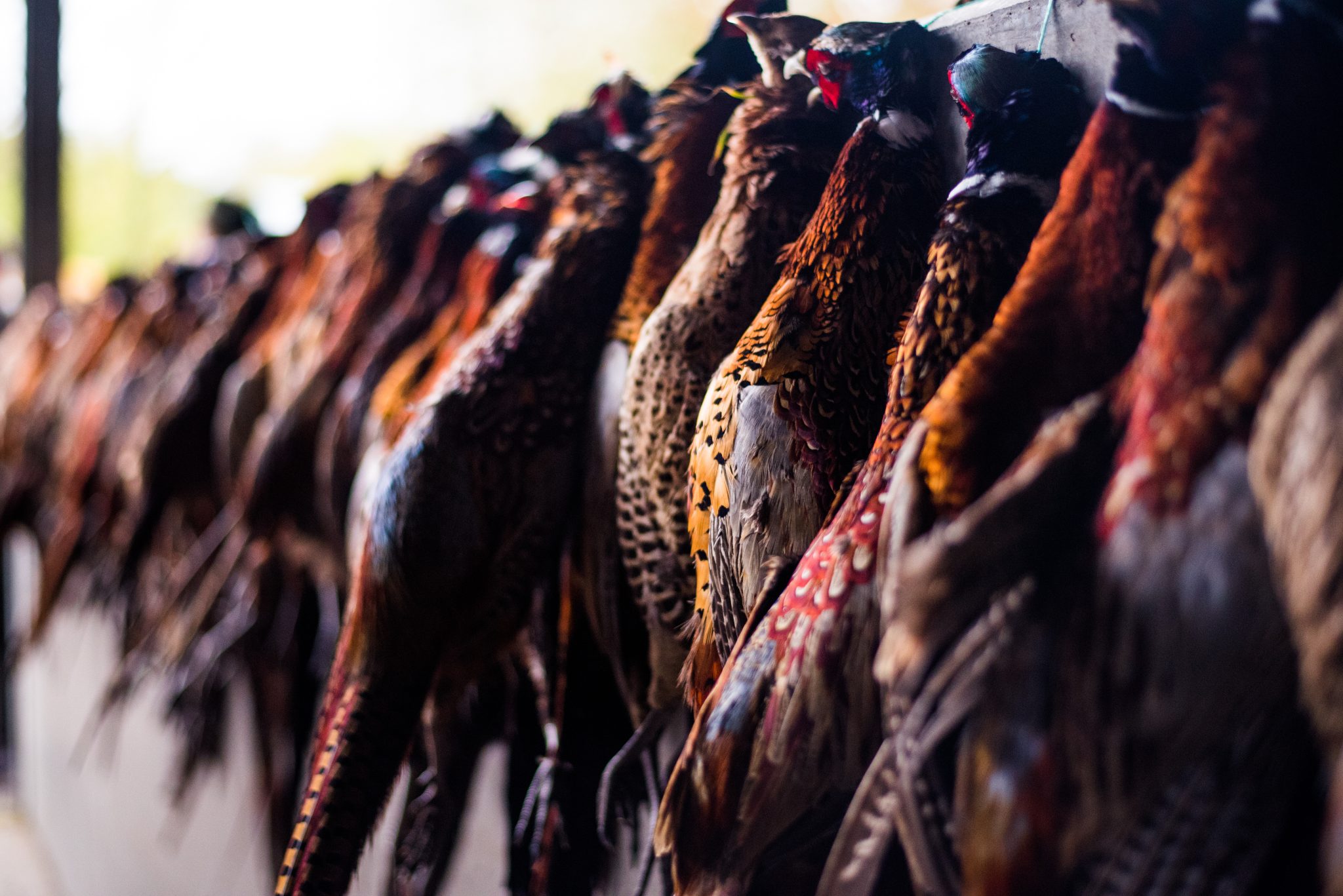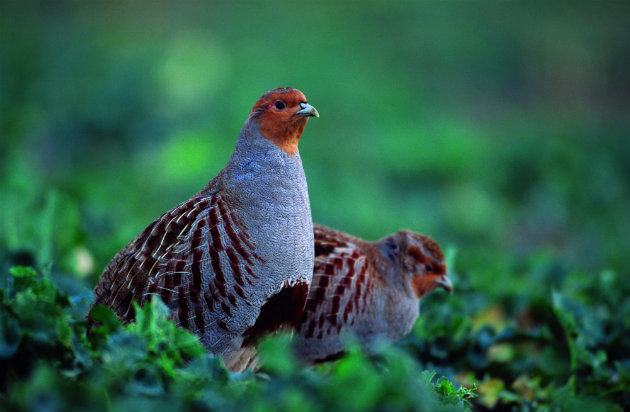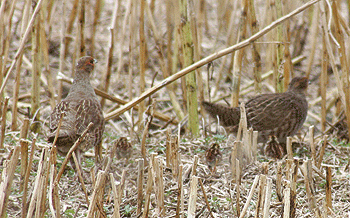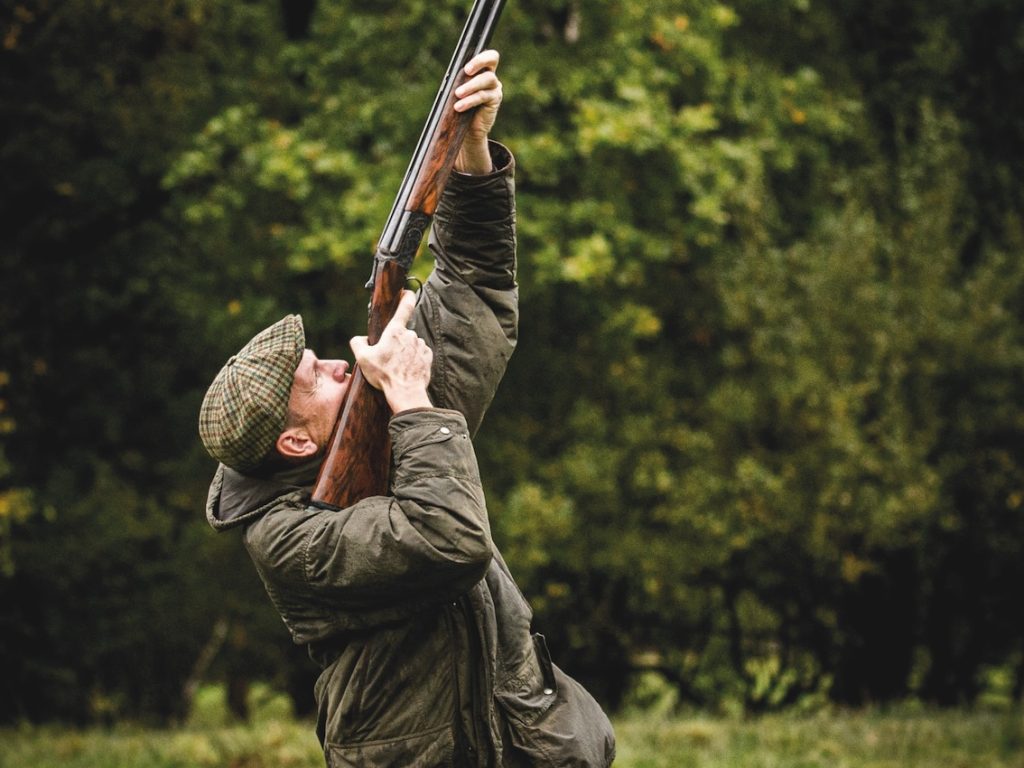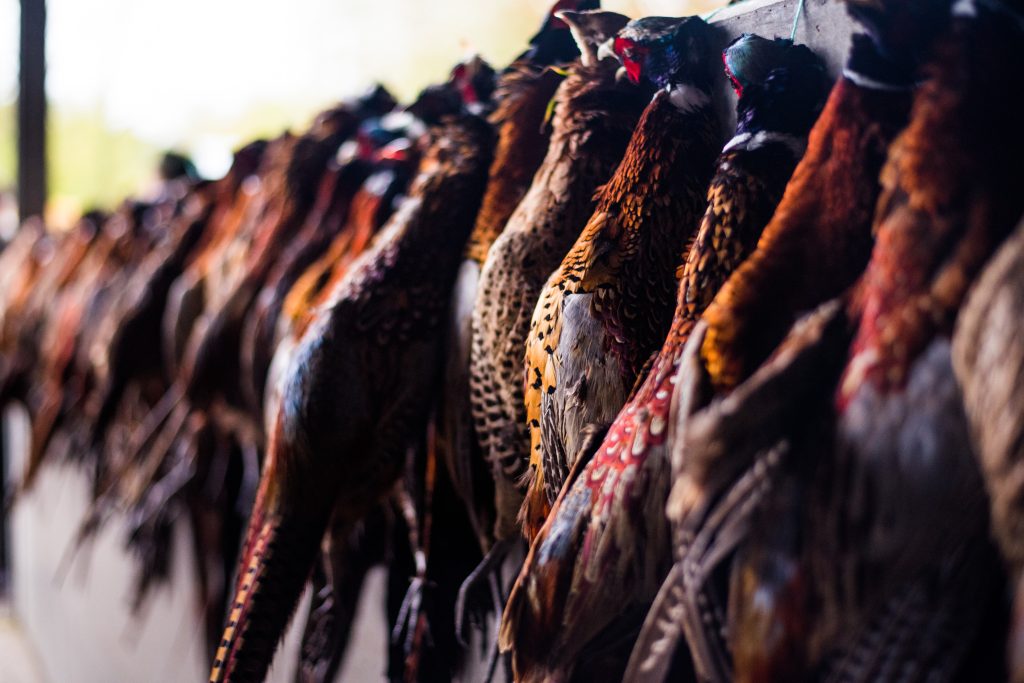The Game & Wildlife Conservation Trust (GWCT) is calling on farmers, landowners and the fieldsports community to help ensure that wild grey partridges survive…
Win CENS ProFlex DX5 earplugs worth £1,149 – enter here
How the grey partridge can survive and thrive
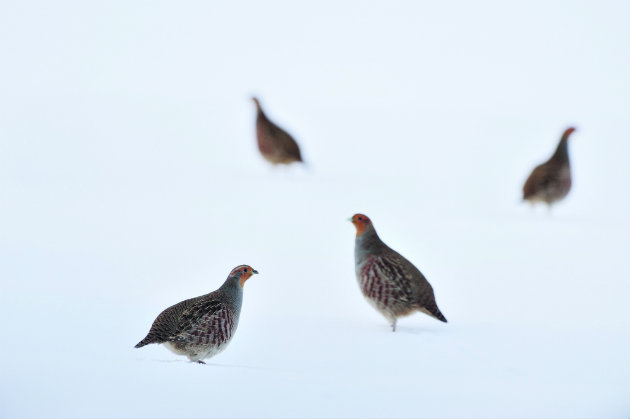
If I did a straw poll of those who have worked with the selection of winged game we have in the UK, the grey partridge, Perdix perdix, would come top of the list. This little bird’s tenacity, endearing charm and ability as a parent raises it above almost all the rest, with the red grouse being my choice as the closest competitor for the top spot.
As a species, man has done this bird — along with so many others — no favours over the past 70 years or so. The drive for food production after the end of World War II resulted in the introduction of many practices that were to lead to the extinction in some parts of the country of this lovable resident.
What we must remember is that as a wild gamebird the grey partridge, by virtue of its sheer ability to produce large broods of young, actually determined the number of cartridges produced for many years. It is estimated from bag returns from old estates that in the final few decades of the 1800s, and the first few of the 1900s, some two million were shot: a staggering number by the rather meagre population we have left today. Bear in mind that though millions of rabbits were also being killed then, the vast majority of them were not shot; they were trapped, snared or netted. Shooting was deemed an expensive way to kill something you could catch by other means.
Grey partridge in Perthshire
I started my career as a gamekeeper all too many years ago at Dunsinane in Perthshire where I first worked with the grey and where I came to admire it. It was here that I saw just how prolific it can be when one of our farmers contacted us about a nest in a place where it was about to be disturbed. That nest contained 24 eggs, the largest my old headkeeper had ever seen. They were taken, placed under a hen — that was what we used for many of our greys there — and in less than a week every single one hatched. I found it hard to believe that a hen partridge could have covered all those eggs well enough to keep them all viable, but she had.
Reasons for grey partridge decline
I often wonder, in keeping with other areas that were so good for wild partridge production then, just how the bird has fared in the Strathmore valley since. The widespread use of insecticides, the general increase in maximising the area under production, the loss of hedges, the lack of over-wintering food supply from stubble fields and last, but far from least, the huge increase in predators due to the decline in their control, has led to an 85 per cent decrease in the birds’ numbers in the past 25 years alone. That rate of decline has taken the grey into the red list. The most recent estimate of numbers of pairs I can find is some 43,000, though at the rate they have been declining it will now be less than that.
I have already mentioned the reasons for the losses, and to a point they can all be addressed, but it takes serious commitment to achieve that end. Cover for nesting, food for adults and to provide those vital insects for chick survival can be replanted. The ongoing harmful use of insecticides can be stopped. Legal predator control can be reinstated.
Predator dangers
However, part of the problem for anyone undertaking a project like this now is that there are so many protected predators, and once you produce a food supply many of these very mobile species will move to utilise it. The hedges, or field margins, that are vital for gamebirds are also routes for both foxes and badgers. A study of bumblebee nests in hedges a few years ago was abandoned because badgers dug out every single one. The sitting hen partridge will fare no better.
The partridge tends to select her nest site with care, and makes a good fist of lining the scrape with dry grass to make an adequate cup to contain around 12 to 16 eggs, though as I mentioned earlier larger numbers are not uncommon. The hen, in common with a few of the other gamebird species, incubates for 24 days, after which the young hatch. The chicks are instantly mobile, seeking out the vital insects on which they rely for a couple of weeks or so.
Mothering nature
The cock and hen look after their brood in equal measure. They are the best of parents, taking great care of their young; indeed, such is the mothering nature of the grey partridge that pairs without chicks will readily adopt some if they can find them, and will often try to attach themselves to a covey containing youngsters, much to the annoyance of the parents of that brood. That ability to adopt young has been exploited by gamekeepers for many years because if you release a brood of poults close to a barren pair, that pair will seek them out and take them under their wing, as it were, rearing them as wild birds so that they learn all the skills of the wild parents.
Most think of the grey partridge as a lowland bird, but there are good numbers in the uplands and, una ected by all the ills of the lowlands, the partridge that decided to try its luck on the moor margins has fared rather better. The only thing that keeps them in check up here is the weather, and it can be severe, reducing stocks to the bare minimum at times.
At least up here, though, there is still a plentiful supply of insects for the chicks, the cover is as it was many years ago and, if the keeper is a thoughtful one, he will give them a bite to eat when times get tough. Believe it or not, as I write, I can hear one calling. I’m a lucky man.
How your shoot can help save the grey partridge
How do you bring partridges back when they are extinct locally? Well, you don’t need to be a millionaire, you…
Related Articles
Get the latest news delivered direct to your door
Subscribe to Shooting Times & Country
Discover the ultimate companion for field sports enthusiasts with Shooting Times & Country Magazine, the UK’s leading weekly publication that has been at the forefront of shooting culture since 1882. Subscribers gain access to expert tips, comprehensive gear reviews, seasonal advice and a vibrant community of like-minded shooters.
Save on shop price when you subscribe with weekly issues featuring in-depth articles on gundog training, exclusive member offers and access to the digital back issue library. A Shooting Times & Country subscription is more than a magazine, don’t just read about the countryside; immerse yourself in its most authoritative and engaging publication.





